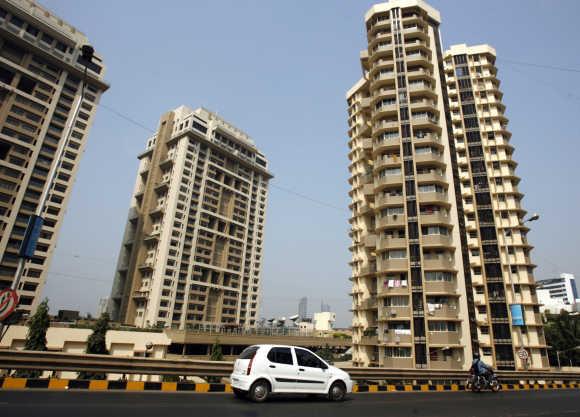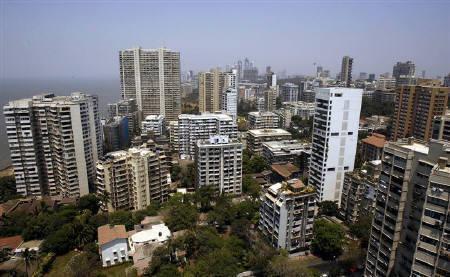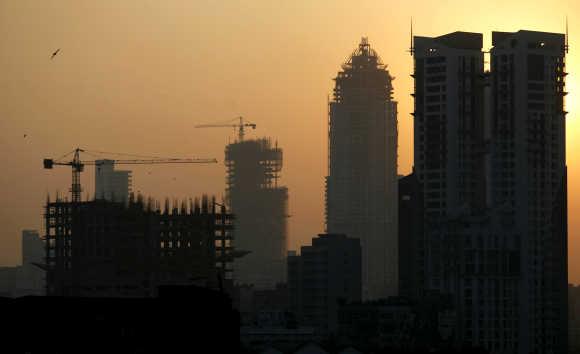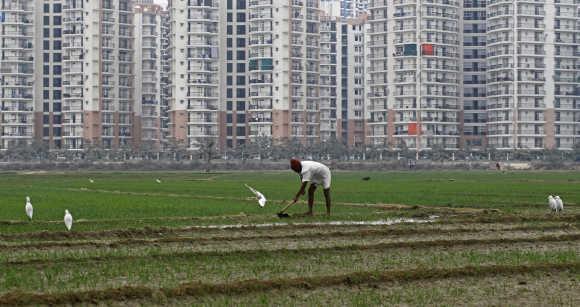 | « Back to article | Print this article |
Why high-rise development is not that good
The growth of cities and suburbia in the past has been determined by, more than anything else, technology, writes Subir Roy
Urban Development Minister Kamal Nath has kicked up a storm by suggesting unequivocally that the only way for Delhi to grow is vertically since, bounded by Haryana and Uttar Pradesh, it cannot grow horizontally any more.
Delhi is, in fact, much better placed on ground space than most Indian cities.
For the national capital, a more important issue is retaining its character and the unique sense of history imparted by all its monuments.
So, determining the merits and demerits of vertical growth in Delhi is important not so much for itself as to get a fix of issues that affect cities across the country.
The growth of cities and suburbia in the past has been determined by, more than anything else, technology.
Click NEXT to read further. . .
Why high-rise development is not that good
So long as people could only move in horse-drawn carriages, cities till the mid-19th century could not spread out beyond a point.
This gave rise to central business districts, where important buildings were located and near which the better off lived.
With the advent of metro rail transport, bigger cities and long commutes became possible by the turn of the century.
Then came the private motor car, and suburbia began to define Western urban space from around the mid-'50s, along with the decline of inner cities.
Today, the telecommunications revolution, the Internet, a concern for global warming and a desire for a healthy lifestyle are redefining urban living.
Click NEXT to read further. . .
Why high-rise development is not that good
Suburbia, where families need to own more than one car, is out and the age of dense living has returned.
People are realising the need to live near the place of work, walk a lot to complete minor errands, and cycle as much as possible so as not just to remain in good health but also to breathe less polluted air.
Bicycle pools and lanes are now the rage in European cities.
To these technological imperatives have to be added the realities of urban life and governance in India.
Here is what individual service providers in Delhi have to say, going by a Times of India report, in response to Kamal Nath's intervention.
Click NEXT to read further. . .
Why high-rise development is not that good
Delhi already suffers severe power shortage.
Power demand is growing by 25 per cent a year, and consumption per household is up from projected 5 kW to 11 kW, courtesy the increasing use of air conditioners through the day.
An electricity distribution company manager says, "The moment you encourage high rises, power demand goes up."
There are water shortages, too.
The Delhi Jal Board has written to the Delhi Development Authority asking for a change in building by-laws so that buildings with more than two storeys have their own underground tanks and the board's responsibility ends with filling them up.
It is the same story with parking space for cars.
Brawls over parking are becoming more and more common, even though 80 per cent of residents still do not own cars.
Delhi's population growth has outstripped all projections.
Click NEXT to read further. . .
Why high-rise development is not that good
Hence it has been battling under severe infrastructure shortages for decades now, additional capacity becoming inadequate by the time it arrives.
And the story is the same in other boom towns like Bengaluru and Pune.
Absolutely the last thing to do is to argue for high-rise development while paying lip service to infrastructure needs.
As things stand, they will not be met in time.
The failure of the Jawaharlal Nehru National Urban Renewal Mission in promoting local government reform, which would have improved the capacity to deliver better infrastructure, is a clincher.
Click NEXT to read further. . .
Why high-rise development is not that good
It is absurd to be wholly technology-driven and argue that if Manhattan, Singapore and Hong Kong can grow upwards, so can we.
Poor infrastructure, courtesy the quality of local government, is causing Indian cities to approach breaking point even at their present levels of growth and concentration.
To build more vertically without taking care of infrastructure first will be suicidal.
Since urban growth has its own dynamic and will continue as it is a corollary of rapid economic development, what is to be done?
One way is to encourage mixed-use development, where people live near their place of work, in areas earlier unbuilt -- creating the likes of Whitefield in Bengaluru or Rajarhat in Kolkata.
Click NEXT to read further. . .
Why high-rise development is not that good
Of course, you can have high-rises there.
But it will be calamitous to raise the floor space index for inner city areas to encourage high-rise development there.
Another option is to build new cities with infrastructure already in place, like the seven that will come up along the Delhi-Mumbai industrial corridor.
Yet another solution is to urgently improve public transport everywhere, making it dependable and usable, thus reducing reliance on cars.
Allowing for high-rise development under present conditions will help only builders.
They will develop costly floor space, sell at a huge profit and walk away, leaving the system to fend for itself.







